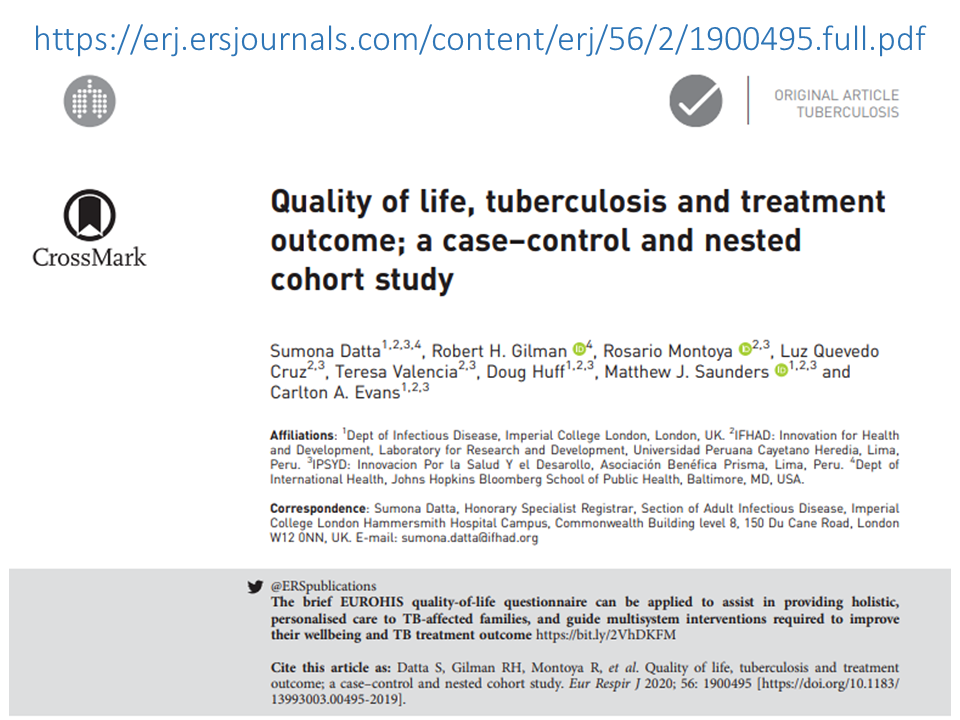
Every month I try to read an open-access article. After reading the article, I share the tittle and associated link with my followers. This is to encourage clinicians to read articles, stay up to date, and continue to grow.
Link to the article: https://erj.ersjournals.com/content/erj/56/2/1900495.full.pdf
Link to the blog post: https://respiratory.blog/lets-read-an-article-a-month-october-2020/
This month I found a great piece to share with you. This one falls under original research and Tuberculosis. The objective of this paper is to “ to evaluate the EUROHIS-QOL tool for quantifying QOL in TB-affected people (patients and their contacts) versus healthy community controls, and to assess whether QOL at the time of diagnosis predicts treatment outcome, including survival. ” (p 2).
Quality of life, tuberculosis and treatment outcome; a case-control and nested cohort study
By: Sumona Datta, Robert H. Gilman, Rosario Montoya, Luz Quevedo Cruz, Teresa Valencia, Doug Huff, Matthew J. Saunders, and Carlton A. Evans.
European Respiratory Journal 2020 56: 1900495;
DOI: 10.1183/13993003.00495-2019
Common abbreviations used in this post and article include Tuberculosis (TB), Quality of Life (QOL), and Activities of daily living (ADL).
Top 3 reasons why I enjoyed reading this article
- It is a reminder of the impact of this disease. Infects 10 million people annually with 1.5 million of them passing away because of it (p.2).
- The authors express that the treatment of a condition is not just the identification and its treatment. There are psychological and socioeconomic elements that also need to be considered. “It highlights the need to improve TB-related QOL, including the profound dissatisfaction with one’s self, relationships, global QOL, potentially worsened by TB-related distress, stigma and isolation” (p.10).
This article also supports the WHO recommendation “such as education and counseling to improve adherence and treatment completion” (p.11)
- The authors were clear about the strengths and weaknesses of their article.
(-) It was shared that QOL questionnaires are subjective (p12).
(+) The authors recognized the diversity in their study: “15 peri-urban shantytowns and 17 urban communities” (p.12).
Personal thoughts and reflections
In this article, the World Health Organization’s The End TB Strategy was brought up. I located the page on the WHO’s website: https://www.who.int/tb/strategy/en/.
There is a vast amount of information available, including tabs for Strategy Pillars, Strategy Principles, Adapting the Strategy, Measuring Progress, and TB Elimination. TB is not unique to other countries. A 2017 Canadian government statistics showed that “4.9 per 100, 000 of the population” has active TB (https://www.canada.ca/en/public-health/services/diseases/tuberculosis/surveillance.html). I encourage you to take a moment and learn more about TB and its impact on people.
What are your thoughts on this article? Do you have any experience treating patients with TB?
Happy learning and reading!
Farzad Refahi
October 1st, 2020
https://respiratory.blog/lets-read-an-article-a-month-october-2020/